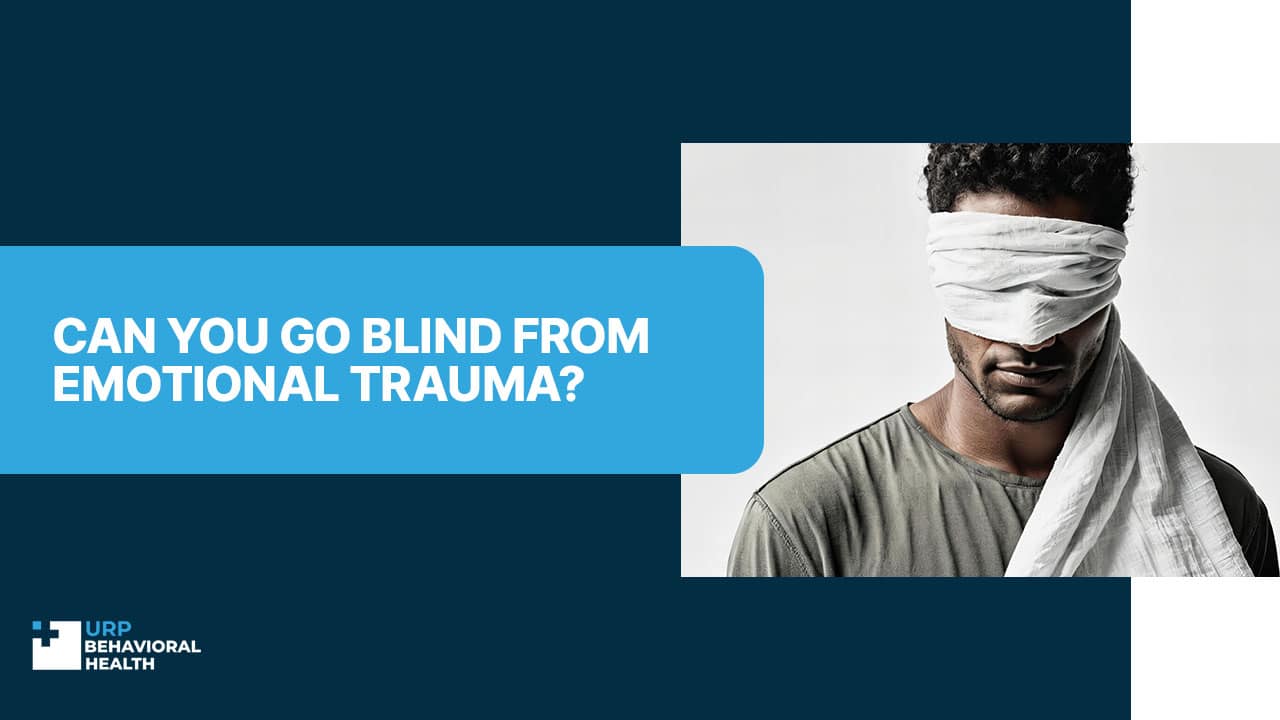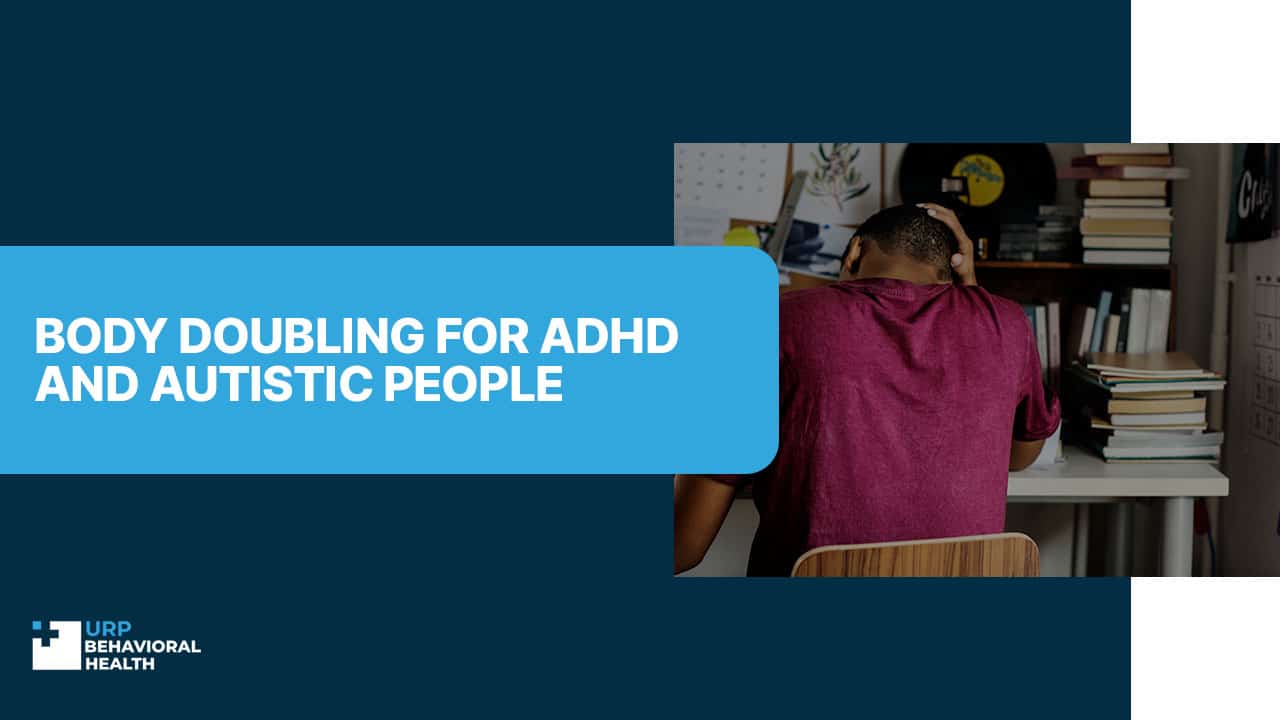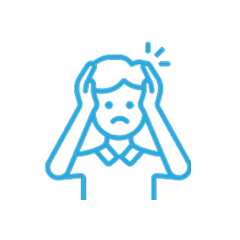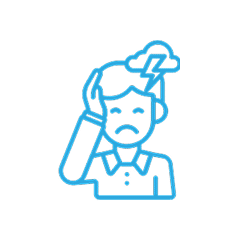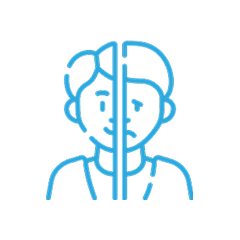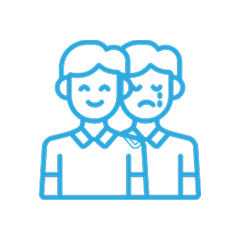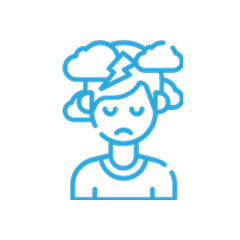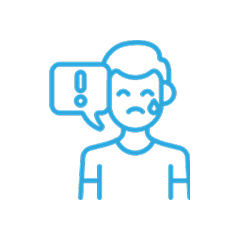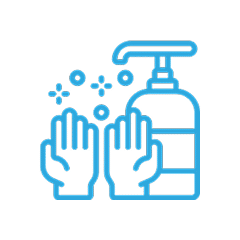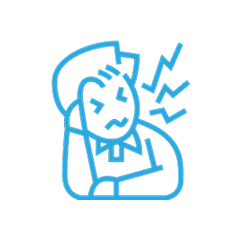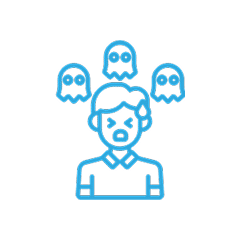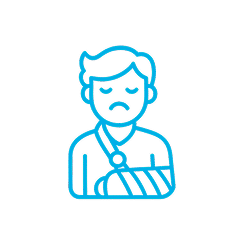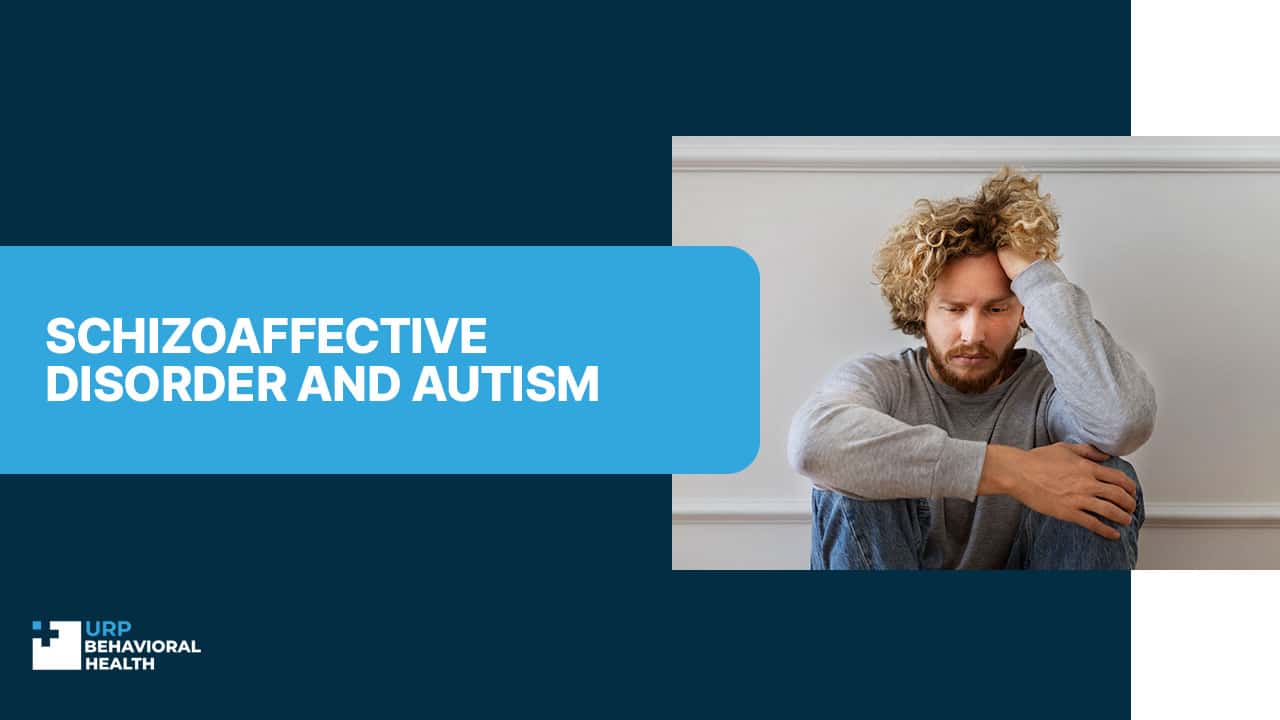
Schizoaffective Disorder and Autism
Autism and schizoaffective disorder refer to neurological disorders. Both disorders manifest themselves in impaired brain function, social skills. Approximately one third of patients with autism spectrum disorders are reclassified as schizoid personality disorder in adulthood and autism often misdiagnosed as schizoaffective, which has been proven by research, so let’s consider the features of both disorders and methods of their therapy.
Schizoaffective disorder is a chronic psychotic illness of the schizophrenic spectrum. At the same time, schizoaffective disorder has a number of characteristic clinical differences, and this disease also differs in terms of treatment approaches.
To begin with of all, the contrasts between schizoaffective clutter and schizophrenia are the nearness of conditions that can be characterized as temperament clutters (depressive or hyper), which are most characteristic of manic-depressive psychosis.
At the same time, in arrange to form a conclusion of schizoaffective clutter, it is fundamental to have at least one demonstrated insane scene within the therapeutic history without the nearness of a serious disposition clutter.
As a run the show, the forecast of this malady is more generous than most cases of schizophrenia, patients stay able to work longer, and reduction periods are longer.
Autism is a developmental disorder that affects approximately 1% of the world’s population. It is a condition that includes problems with social and communication skills, sensory perception, movement and fine motor skills, language, and intellectual abilities.
Symptoms of autism usually appear in early childhood – before the age of 3. They include impaired communication, social contact, and repetitive or restricted activities. It may (or may not) be associated with language delays or mental retardation. Those with ASD often show atypical reactions to sensory stimuli, such as unusual sensitivity to light, sound, smell, and taste. They may start screaming or become stunned even by a soft sound or a flash of light. Other common symptoms include a need for repetition, anxiety, and, in some cases, surprising abilities in certain areas (often music and math).
The diagnosis of ASD is based on observation and psychological testing of the child. Those with autism may have mental retardation, various behavioral disorders, and hearing problems, which are also symptoms of a number of other diseases. Therefore, if there is a suspicion of autism in a child, it is necessary to confirm the diagnosis by several specialists. Testing for autism consists of an interview, observation and evaluation by a psychologist, pediatrician, and pediatric neurologist. The screening may include IQ tests, speech development assessment, hearing and vision tests, special autism questionnaires, and much more.
Accurate diagnosis and early detection lead to more successful correction of this condition during treatment.
Can You Have Autism and Schizoaffective
The question of whether there is a phenotypic overlap or co-morbidity between autism and schizophrenia dates back to 1943, when Dr. Kanner first used the term “autism” to describe egocentricity. The difference between these disorders remained unclear for almost 30 years. In 1971, Colvin conducted an original study that revealed the difference between autism and schizoaffective disorder and became a prerequisite for the decision to classify these disorders into two different categories.
The patient’s age at the time of symptom onset and clinical manifestations distinguish autism from early schizoaffective disorder. In addition, these disorders are treated differently. It is believed that schizoaffective disorder sometimes develops in individuals with autism. However, it should be noted that children with schizophrenia have a fairly high level of premorbid early developmental abnormalities in childhood.
Our team will verify your insurance and design a plan tailored to your needs.

Connection Between Autism and Schizoaffective
Let’s start with what symptoms are similar in autism and schizoaffective disorder:
- Lack of flexibility and inability to take into account the interests of others in communication;
- Impaired testing of reality (especially adaptation to new things, studying the qualities of objects);
- Difficulties in sensory modulation (auditory, visual-spatial);
- Atypicality of associations.
Differences Between Autism and Schizoaffective
We’ve looked at the relationship between the two diseases, now let’s compare schizoaffective vs autism.
Through scientific research and the collection of behavioral characteristics, scientists were able to prove that these are two different pathologies that have nothing to do with each other, except for a few behavioral features.
Unfortunately, until now, in pediatric practice, children under the age of 18 are not diagnosed with schizoaffective disorder. Most often, experts suspect autism. And only at an older age, when the manifestations of schizoaffective are most pronounced and it is possible to differentiate the manifestations, the diagnosis can be revised.
- One of the main features schizoaffective disorder vs autism is that schizoaffective disorder is chronic in nature (i.e., there are periods of exacerbation of symptoms and periods of remission). Autism is a more stable, non-progressive condition;
- Autism is a primordial disorder, and schizoaffective manifests itself, most often, after 6 years.
- In childhood schizophrenia, there are problems with separating fantasies from reality, and in autism, there are deficiencies in imagination, inability to fantasize.
- In childhood schizophrenia, atypical, unjustified fears (for example: white figurines) may be observed, and in autism, fears are justified by sensory modulation disorders, not a pleasant experience.
- The thinking of children with schizophrenia is confused and inconsistent.
- In autism and childhood schizophrenia, semantic and pragmatic speech disorders may be observed, but in autism, the child will “circle” on favorite topics, and in schizophrenia, he or she will move from topic to topic in one sentence.
Shared Symptoms of Autism and Schizoaffective
Although the disorders are different, they share clinical features. The social withdrawal, communication impairment, and poor eye contact seen in ASD are similar to the negative symptoms seen in young adults with schizoaffective disorder. When high-functioning people with autism are stressed, they become very anxious and can sometimes appear disordered and paranoid, especially when asked to change the subject of a conversation or to stop an activity they are participating in and start a new one.
Researchers use a variety of terms to describe this complex combination of psychiatric comorbidity and developmental psychopathology. At the Yale Children’s Learning Center, a subset of children with ASD are labeled as having multiple developmental disorders. Researchers in the Netherlands used the term “multiple complex developmental disorders” (MCDD) to describe children who met the criteria for ASD and also had manifestations of dysregulation and thinking disorders. Of considerable interest are further studies that showed that 64% of children with multiple complex developmental disorders developed psychosis in adulthood.
The researchers concluded that children with multiple pervasive developmental disorders are at high risk of psychosis in later life.
Treatments
How long schizoaffective disorder is treated depends on the duration of the disease, the intensity of the symptoms, the individual response to therapy, and, of course, the qualifications of the psychiatrist. In the case of timely treatment, acute schizoaffective disorder can be cured in 1-2 months, reducing the hospital stay to 2-4 weeks.
Based on the clinical picture, an individualized drug therapy regimen is developed.
In the case of a prolonged course of SAD, it leads to serious social dysfunction, and a course of cognitive behavioral therapy will be required to restore adaptive skills. In the course of therapy, patients learn stress management techniques, work on smoothing out personality traits, and master self-regulation techniques that reduce the intensity of delusions and obsessions. Participation in support groups makes it easier to adapt to a new lifestyle; family therapy and harmonization of relationships with parents play an important role in the rehabilitation of children and adolescents.
Autism therapy is an area where there are many unconfirmed treatments, so it can be difficult to navigate. Here are some proven options that really help alleviate autism symptoms.
- Speech therapy. If a child does not speak, he or she is likely to focus on basic communication skills through gestures. The work of a speech therapist is aimed at developing the ability to use language in social settings.
- Behavioral therapy is one of the oldest and most fully researched methods specifically designed to treat autism. It is an intensive, reward-based training system that focuses on the child’s mastery of certain skills, such as daily self-care tasks (tying shoes, brushing teeth, etc.).
- Social skills development therapy uses play-based methods based on the child’s own interests, strengths, and developmental level to improve emotional, social, and intellectual skills. Social therapy through group activities teaches children with autism how to interact properly by sharing, cooperating, changing each other, asking and answering questions, etc.
- The physiotherapist works on motor skills, body control through physical exercises and outdoor games.
We’ll help you understand your options and guide you toward care.
Risk Factors
Schizoaffective disorder:
Schizoaffective clutter is accepted to be caused by biochemical and hereditary variables, unfavorable natural conditions. Patients with schizoaffective clutter have an awkwardness of certain chemicals within the brain.
So there are individuals at hazard: having relatives with schizophrenia or a disposition clutter, having relatives with schizoaffective clutter.
Autism:
Approximately 3 to 5% of children who have an aunt or uncle with autism spectrum disorder (ASD) are at risk for ASD compared to about 1.5% of children in the general population, according to a study funded by the National Institutes of Health. The researchers found that a child whose mother has a sibling with ASD is not significantly more likely to be affected by ASD compared to a child whose father has a sibling with ASD.
The findings call into question the protective effect of female gender, a theory that women have lower rates of ASD than men because they have greater tolerance to ASD risk factors.
The findings, based on records of nearly 850,000 Swedish children and their families, appear in the journal Biological Psychiatry. The study was conducted by John N. Constantino of Washington University in St. Louis, and his colleagues in the United States and Sweden.
Conclusion
As a rule, the prognosis of schizoaffective personality disorder is more benign than most cases of schizophrenia, patients remain able to work longer, and remission periods are longer. Among the types of schizoaffective disorder, schizoaffective disorders of the depressive type have the longest course and less favorable prognosis, which tend to develop into schizophrenia in the absence of proper treatment.
There is no single methodology for the treatment of schizoaffective disorder, due to the many manifestations of the disease.
The same is true for autism spectrum disorders: it has to be dealt with on a daily basis, and one of the main points is quality diagnosis and coherent therapy.
You can get a full life by turning to the specialists of URP Behavioral Health, whose focus is on quality identification and counseling, as well as further selection of comfortable and appropriate conditions for rehabilitation of people with various mental problems.
Reach out today and let us create a treatment plan designed around your needs.

References:
- Diagnostic Difficulties in Discriminating Autism Spectrum Disorder in an Adult With Periodic Psychosis Versus Schizophrenia Spectrum Condition. https://pmc.ncbi.nlm.nih.gov/articles/PMC8901156/
- Schizophrenia vs. Autism. https://neurodivergentinsights.com/shizophrenia-vs-autism/
- Autism risk estimated at 3 to 5% for children whose parents have a sibling with autism. https://www.nih.gov/news-events/news-releases/autism-risk-estimated-3-5-children-whose-parents-have-sibling-autism
- Autism risk factors: genes, environment, and gene-environment interactions. https://pmc.ncbi.nlm.nih.gov/articles/PMC3513682/

